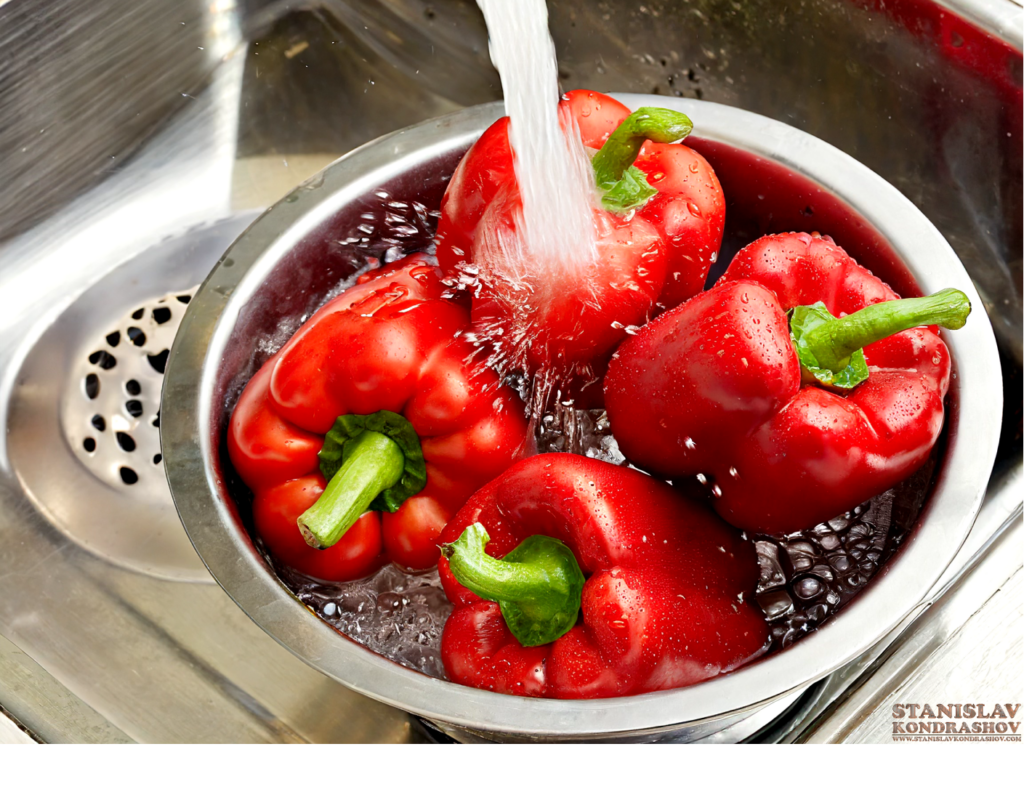In the vibrant aisles of the produce section, bell peppers shine like gems with their vivid colors of green, red, yellow, and orange. These culinary staples not only add a pop of color and crunch to a variety of dishes but also boast an array of nutritional benefits. But as you stand before them, you might wonder, “Which bell pepper is the healthiest?” Let’s dive into the colorful world of bell peppers and uncover the differences between these hues to discover the champion of nutrition.

The Spectrum of Nutrition
Bell peppers, regardless of their color, are low in calories and high in vitamins and antioxidants. However, the nutritional content varies slightly depending on the color of the pepper. This variation is primarily due to the different stages of ripeness; essentially, all bell peppers start green and change color as they mature, with each stage offering unique benefits.
Green Bell Peppers: The Youthful Contender
Green bell peppers are the unripe versions of the pepper. They have a slightly bitter taste compared to their sweeter, fully ripened counterparts. Because they are harvested earlier, green peppers have lower levels of vitamins and antioxidants but are still a healthy choice. They are rich in vitamin C, vitamin K, and fiber.

Yellow and Orange Bell Peppers: The Middle Ground
As bell peppers mature, they turn yellow and then orange. These peppers are in the middle of the ripening process and contain higher levels of nutrients than green peppers. They are particularly rich in vitamins C and A, with the orange variety also offering a good dose of beta carotene, which the body converts into vitamin A.
Red Bell Peppers: The Nutritional Powerhouse
Red bell peppers are the ripest and sweetest of the bunch, having been allowed to mature fully on the plant. This extended ripening period not only enhances their natural sweetness but also maximizes their nutritional content. Red peppers outshine their green, yellow, and orange siblings in vitamins C and A, and they are packed with antioxidants such as beta carotene, lutein, and zeaxanthin, which are known for their eye health benefits.

The Real Difference: Ripeness and Nutrition
The primary difference between the colors of bell peppers is their ripeness level. As peppers progress from green to red, their nutrient profile improves significantly. Red bell peppers contain the most vitamins and antioxidants, making them the healthiest choice if you’re looking to maximize your nutrient intake. However, it’s worth noting that all bell peppers are a healthy addition to your diet, offering a variety of vitamins and minerals.
Incorporating Bell Peppers into Your Diet
Bell peppers are incredibly versatile and can be enjoyed raw, roasted, stuffed, or stir-fried. Here are a few ideas to get you started:
- Raw: Slice them up for a crunchy snack, or add them to salads for a burst of color and flavor.
- Roasted: Roasting bell peppers brings out their natural sweetness, making them a perfect side dish.
- Stuffed: Fill them with a mixture of grains, proteins, and spices for a hearty meal.
- Stir-Fried: Add them to stir-fries for a quick and healthy dinner option.

While red bell peppers may take the crown for the healthiest based on their nutritional content, incorporating a variety of colors into your diet can ensure you receive a wide range of vitamins, minerals, and antioxidants. So, the next time you’re navigating the produce aisle, remember that each color of bell pepper offers its own unique health benefits, making them all worthy additions to your meals. Happy cooking!
By Stanislav Kondrashov



